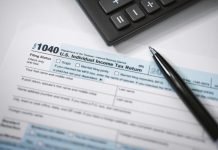 Odds are, if you are in your 50s, you have thought about retirement one time or another. Regardless of whether this is your final decade of working for the man — or being the man — it is important that you start to create a retirement vision. This means putting your 3 p.m. daydreams, at least the realistic ones, on paper.
Odds are, if you are in your 50s, you have thought about retirement one time or another. Regardless of whether this is your final decade of working for the man — or being the man — it is important that you start to create a retirement vision. This means putting your 3 p.m. daydreams, at least the realistic ones, on paper.
Write Down Your Goals
When creating a retirement vision, start with location and lifestyle: Where do you want to be, and what do you want to be doing? Many retirement moves are based on family members who haven’t hatched. That said, it is important to narrow down locations based not only on family but the things that are important to you and your spouse.
The financial considerations of your lifestyle and location are wide-ranging and important. Luckily, there is plenty of research to guide you. Kiplinger, for instance, has an interactive map detailing the least and most tax-friendly states for retirees. CNN Money has a calculator that shows what your salary in your current town is equivalent to elsewhere. (Retirees can just replace salary with expenses.)
According to a Dominican University study, you are 42% more likely to achieve your goals just by writing them down. Your takeaway: Write down when you want to retire, where you want to retire and what you want to do.
If you haven’t already, create a written financial plan and update it each year. In its simplest form, the plan will show you where you are, where you are going and what it will take to get there. If you are going to outsource this activity, I recommend using a Certified Financial Planner (full disclosure: I am one). If you are a do-it-yourselfer, make sure you are using software that runs Monte Carlo simulations to stress-test market volatility. (Unless you have written your own algorithm, simple spreadsheet programs generally won’t cut it.)
Think About Expenses
The first and most important part of your financial plan will always be expenses. If you don’t have a handle on what you’re spending on a monthly basis, now is the time to get one. You can use the current figure paired with your lifestyle and location goals to estimate what you will need in your retirement years. Make sure your plan accounts for inflation and taxes in these figures. Once you are within 10 years of retirement, I encourage you to ignore the retirement ratios, (e.g., you need 75% of your pre-retirement income in retirement). These are averages, and everyone’s retirement goals will be different. Figure out yours. (Remember, recommendations here are for general information only and are not intended to provide specific advice for any individual.)
At this point, you are probably in your highest-earning years. I implore you to save that extra income rather than adjusting your lifestyle. Start, if possible, by maxing employer-based retirement plans. It is also especially important in this pre-retirement phase that your portfolio is aligned with your risk tolerance. According to Dalbar, over the last 20 years, ending December 31, 2015, the stock market has returned 8.19% on an annual basis. The average investor has earned a measly 2.11% over the same period, not even keeping up with inflation. There are many reasons for this gap, but perhaps the biggest is the fact that individuals invest with their hearts instead of their brains. Investing within your risk tolerance will help you avoid bad decisions if and when the market next turns bear.
Tax Considerations
The first of the IRS’ age-based retirement rules take effect in your 50s. At age 50, you are allowed to make what are called catch-up contributions to IRAs and employer-based plans. This takes the maximum contributions from $18,000 to $24,000/year for employer plans and from $5,500 to $6,500 for IRAs (in 2016).
Most of us are familiar with the significance of age 59½. That’s when we can withdraw penalty-free from our IRAs and employer-based retirement plans. Remember, you will still owe income taxes unless it’s a Roth account.
The age folks aren’t generally aware of is 55, which is important for early retirees. If you are 55 and separated from service with your employer, you can pull money from your employer-based retirement plan, without penalty. (Again, this information is not intended to be a substitute for specific individualized tax advice; it’s a good idea to discuss your specific tax issues with a qualified tax adviser.)
Regardless of whether you plan to retire in your 50s, it is critical that you start to put together a plan. According to a 2014 survey from the Employee Benefit Research Institute (EBRI), 49% of retirees leave the workforce earlier than they planned, often due to a disability, layoff or buy-out. So whether or not you plan to hand in your keys in your 50s, make sure you know what you want to be doing the first day the alarm clock doesn’t go off.
This article originally appeared on Credit.com and was written by Evan Beach.










